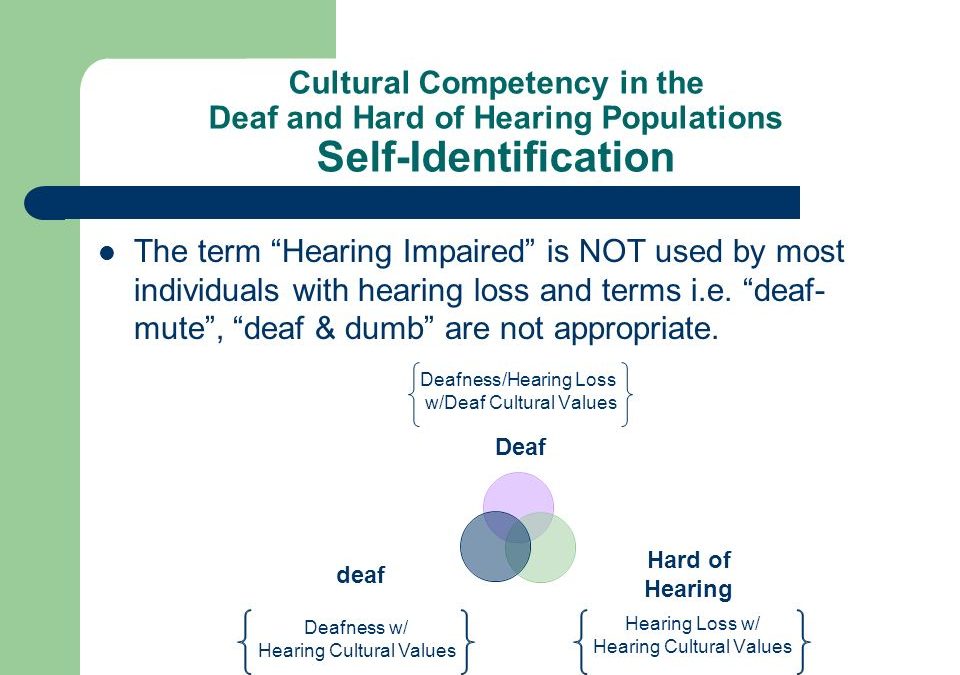
by Jenna Restuccia | Jun 29, 2021 | ADA Compliance, American Sign Language, Assistive Technologies, Tips and Tricks
- Adjust your meeting rooms.
Does your meeting room have rows of chairs, making it difficult to make eye contact? A rounded seating arrangement is more conducive for the deaf as they can see other’s faces. This format enables them to read lips if they wish, see and interpret the tone in which the person is speaking, and know who is talking. This small change can help reduce misunderstandings.
- Set up a Video Relay Service (VRS) device.
A VRS device is a device used to enable a deaf person to make and receive phone calls through an interpreter. This innovation allows a deaf person to contact suppliers, clients or make any call required within their workspace.
- Supply an Interpreter.
It may seem acceptable to work around having an interpreter by writing notes. This practice can cause many misunderstandings as English is not the native language of the Deaf. Providing an interpreter is essential for the work and the growth of deaf employees. These additional services will help increase the ease with which deaf employees can find information or communicate with co-workers.
Making the workplace an accessible space for deaf and hard-of-hearing individuals is an ongoing challenge and necessity for many employers. It is essential to have a well-developed strategy for ensuring that the workplace is easily adaptable to the specific needs of workers. One way to achieve this goal is through the development of a workplace accessibility plan, which should include policies, procedures, and guidelines for training and customizing workstations. While most organizations have policies in place for providing access to information in situations where such communication may be critical, they often fall short when it comes to providing reasonable accommodation for workers of all abilities. Thus, it is imperative to implement a comprehensive plan that considers deaf and hard-of-hearing employees’ unique needs.
It is crucial to train employees on how to make a workplace accessible to disabled individuals. Training should include how to handle emergencies, use ASL, and use electronic or mechanical devices. Employees who do not know how to make a workspace accessible may not perform on a team properly. It is also vital that managers provide cultural training and information to their employees to understand their team members and how to respect and encourage them. If your business offers deaf-accessible products or services, promote them!

by Jenna Restuccia | Jun 22, 2021 | ADA Compliance, American Sign Language
The Americans with Disabilities Act (ADA) is a federal law that U.S. Congress enacted and signed into law in July of 1990 and has since expanded. The Act protects individuals with disabilities who work and seek employment within the United States.
The Act’s purpose is to ensure that ALL employees companies are provided with reasonable accommodation to perform their jobs. For instance, companies may require at least one translator (or interpreter) to translate English into Sing Language and vice versa. An interpreter is especially critical in specific fields such as engineering or medicine because of the specialized nature of the information needed. If an employee or client cannot comprehend communications, they will have a hard time understanding crucial information involved in the workplace. These misunderstandings can mean someone’s life in medical settings and someone’s future on legal grounds.
The ADA ensures that individuals with disabilities are given the same opportunity for employment as other individuals. Any individual with a disability who experiences discrimination can use the ADA law for protection in court.
What are some of the steps that a business owner can take to ensure that they comply with the ADA? Business organizations must register with the Department of Labor. Once they become registered, they are required to undergo many tests and monitoring procedures to ensure compliance. Managers and employees should also begin by undergoing cultural competency training and awareness presentations.

by Jenna Restuccia | Jun 15, 2021 | ADA Compliance, American Sign Language
Cultural mediation is a concept developed to help deaf people experiencing communication problems within their work communities. Cultural mediation involves cultural experts facilitating conversation and learning between the deaf or hard-of-hearing and hearing communities. These discussions work to build an environment that encourages a dialogue between the two groups. The goal is to foster better understanding between the two through careful communication to build trust and respect. Cultural mediators also help participants understand and appreciate a new language or culture, especially where a lack of consistent verbal communication restricts this.
Cultural mediation is a process of interaction that builds a bridge, rather than a divide, between two (or more) sides of a relationship. Cultural mediation assumes that all people have unique and valuable cultural values and experiences. If those qualities and ideas are appreciated and respected by others, a healthy relationship built on mutual respect can form between people from all backgrounds. Cultural mediation can occur in an office setting or group setting. It has been successful for all types of relationships.
In an instance of a deaf or hard-of-hearing person, cultural mediators help the person who uses ASL to communicate to connect with a person who uses English to communicate. Cultural mediation can help to overcome communication barriers that can affect the ability to engage in meaningful interactions. For example, a cultural mediator can make messages clear if there are specific requests to communicate. In addition, cultural mediators are skilled at getting two people on the same page, which is especially important if the issues at hand are at work.
Cultural mediation techniques can also be helpful when one party feels as though they are being talked down to or judged based on their culture. These issues may arise in areas such as language or behaviors. To provide a positive mediation experience, it is essential that the person with the deaf person can participate in the mediation. If a person cannot participate in cultural mediation, the relationship is less likely to thrive. The difference between the deaf and the hearing is a language difference, not a status inequality.
Some examples of cultural misunderstandings that can take place between the two parties are:
- Lack of eye contact can be regarded as rude in the deaf community and would be the equivalent of plugging your ears when someone is speaking to you.
- Looking at the interpreter/mediator instead of the deaf individual can cause feelings of exclusion.
- A deaf individual who stomps the ground or turns off and on lights to get someone’s attention may be considered inappropriate in the workplace when it is very acceptable and common practice in the Deaf community.
Mediation can allow for a safer work environment and more job satisfaction for all parties. When a conflict or concern arises between employees of varying cultures or companies, mediation can help eliminate the dispute and focus on a communal business goal. The goal of cultural mediation is to create a sense of unity and understanding between all parties so that everyone can serve on the team and work towards a common goal. As a result, a business is more likely to create a positive workplace culture that will benefit everyone.





Recent Comments